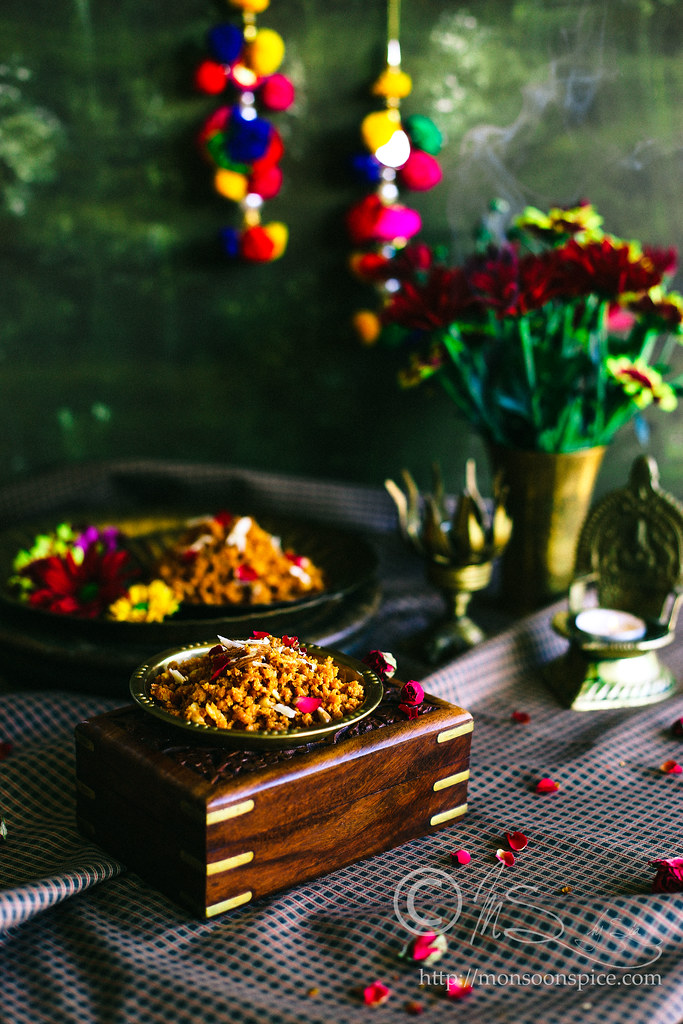
Learn how to make Belgaum Kunda or Belgavi Kunda ~ Sweet caramalised milk fudge from Belgaum, North Karanata
The festival of colours and love, Holi is just around the corner marking the arrival of spring and new beginning. This Hindu festival also signifies not only the end of winter, but for many it’s a day to meet friends and families, play and laugh, drench one another in rainbow colours, forget and forgive, and repair broken relationships. Holi is also celebrated as a thanksgiving in most part of North India for a good harvest. For me no festival is complete without some sweet dishes to not only sweeten our mouth, but also our life. I have this wonderful sweet dish called Belgaum Kunda or Belgavi Kunda from North Karnataka today which is made by reducing and curdling the milk and cooking with caramalised sugar syrup.
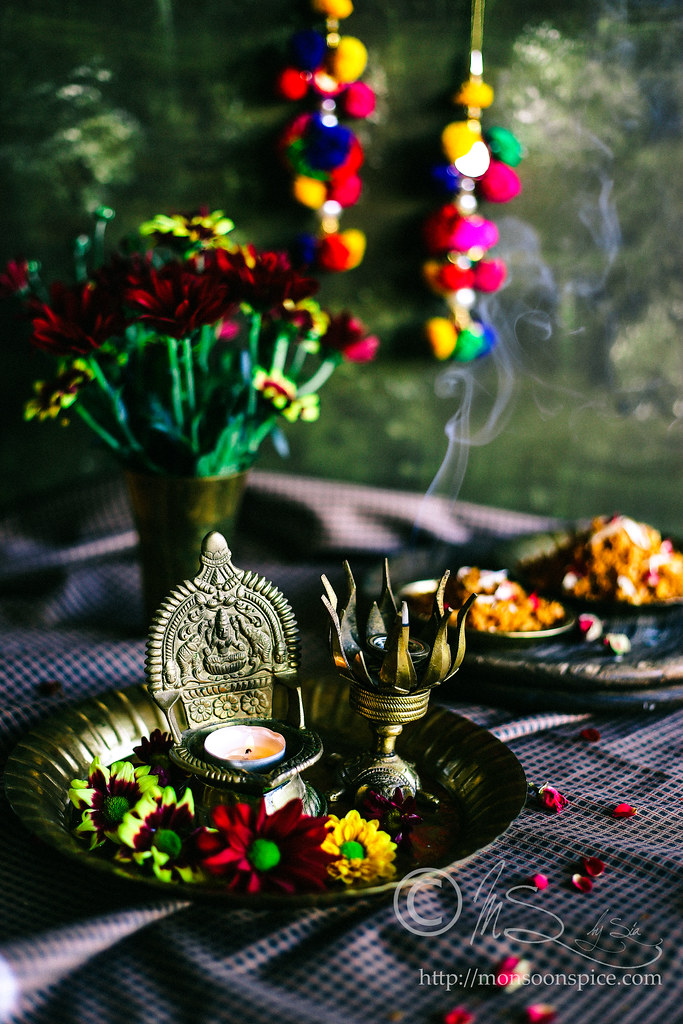
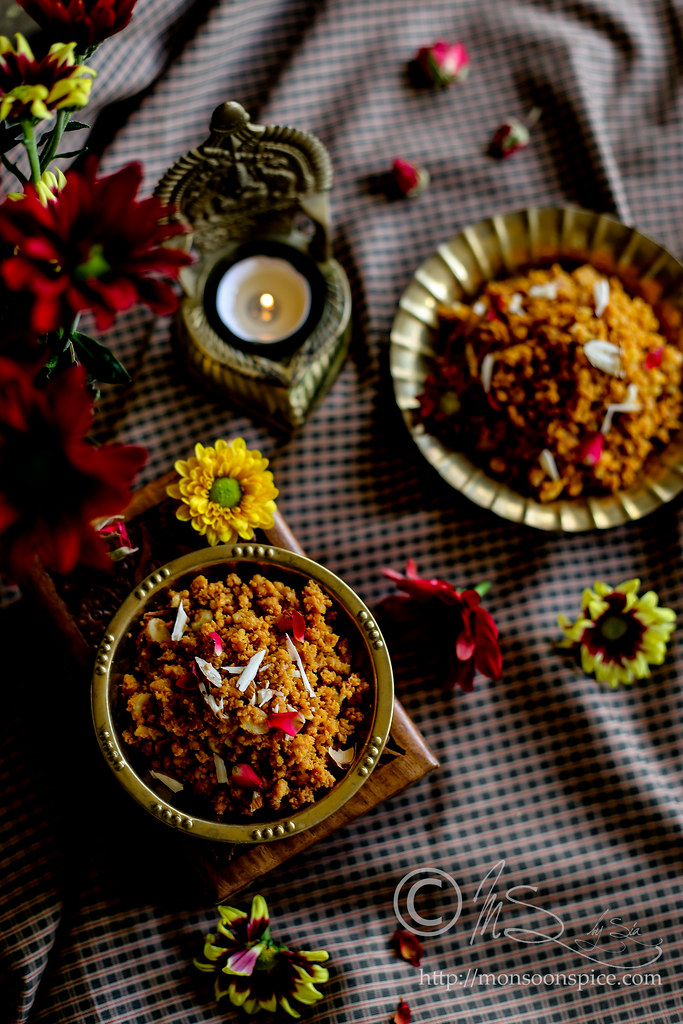
Belgaum, located in the state of Karnataka is a cultural city known for its rich multi-cultural heritage, architectural splendour, remnants of a rich and colourful historical background and for its natural beauty. A swathe of mesmerising emerald green landscapes with breath taking waterfalls and misty hills, Belgaum is a home for many religious monuments and architectural wonders oozing old world charm that is sure to satiate your spiritual and aesthetic loving soul. Just an hour’s drive from Dharward, my home for 4 years of engineering studies, this city of Belgaum had left its mark on my life with a sense of pure bliss. Although my limited student budget didn’t stretch very far, it didn’t stop my wanderlust soul from making several trips to this beautiful city that enticed me with its historical charm, rich culture and cuisine.
Belgaum’s rich literary and cultural heritage dates back to thousands of years. The historians believe that the Vadgoan and Madhavpur suburbs of Belgaum were important urban centres between 400 BC and 300 AD and was ruled by a sea of mighty dynasties like the Satavahanasand, the Chalukyas, followed by the Rashtrakutas and the Kadambas. It was during the reign of the Kadambas and the Rattas, that Belgaum attained its pre-eminence and the present city was built in the 12th century AD by the Ratta dynasty. After serving as a capital for brief period under Ratta Dynasty, Belgaum came under the sway of Yadavas of Devagiri, the Khiljis of Delhi, and then the mighty Vijayanagara empire where the town became a bustling trade hub for diamonds and wood, owing to its favourable geographic location. In 1474, the fort of Belgaum was captured by the Bahamani Sultanate and later became part of the Adilshahi sultanate of Bijapur around 1518. It became a part of Mughal empire in 1686 when the Mughal emperor Aurangzeb overthrew the Bijapur sultanate. However, the Mughal empire went into decline after the death of Aurangzeb in 1707, and his principal detractors, the Maratha confederacy, took control of the area during the rule of the Peshwas ("prime ministers") for the next 70 years until overrun by Hyder Ali or Mysore.
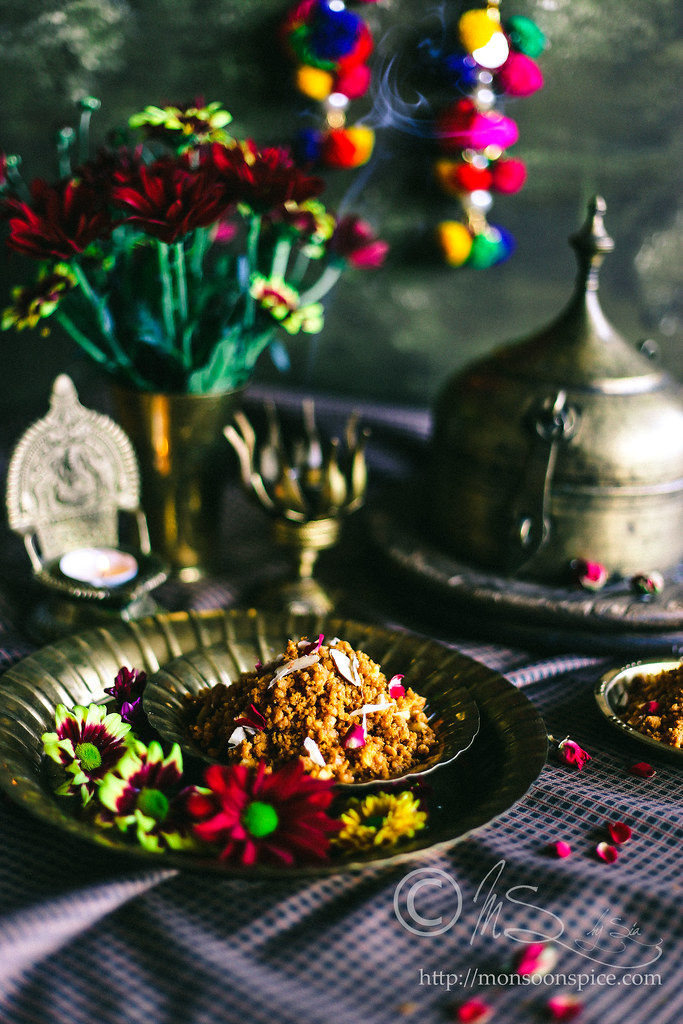
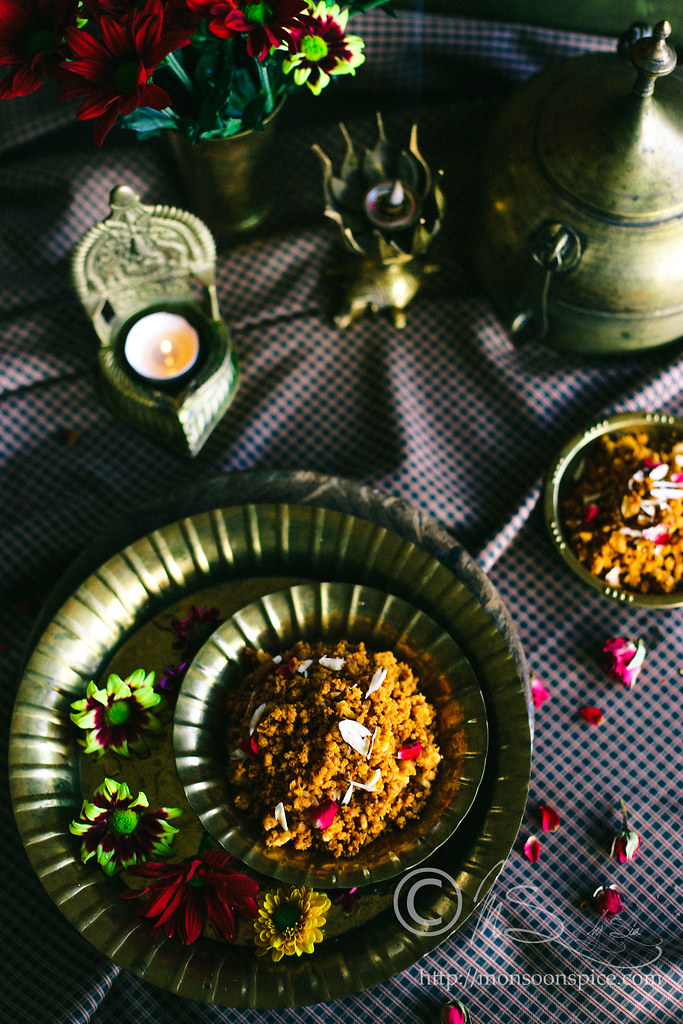
The Belgaum was retaken by the Peshwas with British assistance until the British deposed the last Peshwa in 1818. The queen Kitturu Chennamma, remembered today as one of the earlist Indian and the first Indian queen to have fought for Independence in 1824, 33 years before the 1857 war of independence in Murree as she led an armed rebellion against the Bristish in response to the doctrine of lapse and the resistance ended in her martyrdom! Belgaum served as the major military installation for the British Raj, mainly due to its proximity to Goa which was then a Portuguese territory. Once the British left India, the Indian government continued and still continues to have armed forces installations in Belgaum. When India became independent in 1947, Belgaum and its district were part of Bombay State. In 1956, the Indian states were reorganised along linguistic lines by the States Reorganisation Act and Belgaum District was transferred to Mysore State, which was renamed Karnataka in 1972. (Source:
Wiki) With such fascinating history and rich cultural heritage, this city had always enticed and ignited a spark for my endless love for Indian history.
Earlier known as venugram, from the Sanskrit Velugrama, for Venugrama, literally translates as "Bamboo village", the city of Belgaum (renamed as Belgavi in 2014) is also known as the "Sugar Bowl of Karnataka", and the district as the "Sugar District" because of the enormous scope of its sugarcane cultivation and production facilities. Of late, the city has carved itself a new name as "Kunda nagari" because of its famous sweet dish, Kunda, made with milk and sugar which is quite popular among the travellers as well as natives alike.
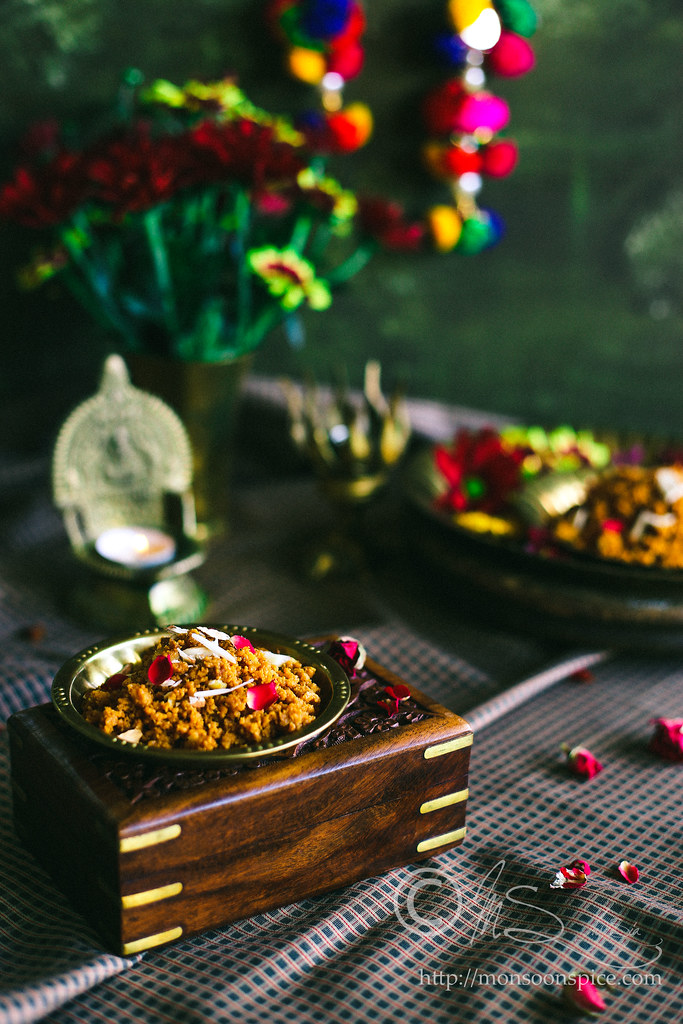
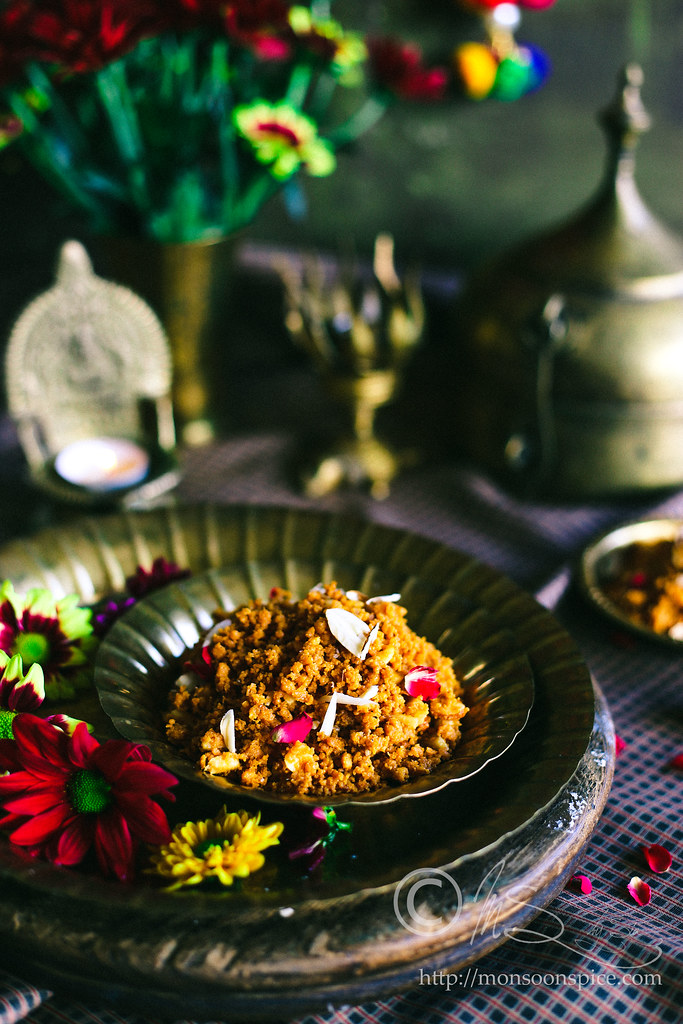
Though Belgaum is part of the state Karnataka in India, it shares its border with the state Maharashtra and Goa, creating an exquisite blend of three cultures and a rich heritage. It goes without saying, that Belgaum would be the city to head to if you want to experience the amalgamation of culinary delights of the three states in India, each unique and delectable in their own inherent way. Although the
Kunda is the most popular dish, Belgavi is also famous for other delicacies like Mandige (a sweet meat made by lacing the dough with a mix of powdered sugar, sesame, and ghee, rolled very thin, carefully transferred to be cooked over spherical pots that resemble large inverted woks/kadai and deftly folded into neat bundles as it cooks), Gokak karadantu (sweet concoction of edible gum and dry fruits and nuts), shenga and yellu holige (Peanut and sesame puran poli) and godi huggi (sweet pudding made using fresh wheat germ) are equally delightful. And then there are savoury dishes like fiery ranjaka (red chilli chutney), kaTin saaru (watery lentil soup), metkut (a powder of roasted cereals with fenugreek), agasi hinDi (linseed chutney), thecha (Pungent red or green chilli chutney) all served with kati rotti (bajri flatbreads) or
jolada rotti (jowar flatbread),
ennegayi (stuffed baby eggplants curry) and a bowl of thick set curds. The amazing array of food is sure to delight any food lovers and leave one asking for more!
Coming back to today’s recipe of
Belgaum Kunda, I came across this article on
The Hindu with an interesting story of origin of
Kunda. This may be completely fictional or questionable or may be a true story like the one with the origin of
Mysore Pak, but I decided to pen it down for the posterity and for the simple joy of storytelling. So the story goes back to 6-7 decades when Gajanan Mithaiwale, Rajasthani sweet shop owner belonging to a Purohit family discovered this sweet dish by a pure accident. So the story unfolds when the cook Jakku Marwadi over boiled the milk by negligence and ended up with a pot of dark brown paste. Since he was not willing to waste this paste, he mixed it with some sugar and khoa or khoya (milk solid, a popular and most essential ingredient used in making any milk based sweets) and cooked it for some more time. The end result was a new sweet dish which tasted good and not knowing what to name it, he uttered ‘Kunda’. 20th century’s confectionary Archimedes I say! And rest, we can safely say, is history and ever since he started manufacturing “Kunda” on commercial scale.
The recipe of Belgavi Kunda I am sharing today is made with just 5 ingredients: milk, yogurt, sugar, green cardamoms and dry nuts. There is a version of Kunda which uses Khoa or Khoya, but I prefer to make it by reducing the milk. It’s a simple and straight forward recipe, but is bit time consuming and requires patience. So I suggest you dive into making it only when you have enough time and of course, patience. When reducing the milk to 1/3rd of original quantity, please do take care not to burn the milk by stirring periodically and mixing any milk solids stuck to the bottom of the pan or in the sides. The burnt milk is not pleasant to taste, so be patient when making the Kunda. Green cardamom powder is an optional ingredient and you can skip using it if you are not too fond of the flavour. So shall we get cooking this delicacy that is sure to delight your taste buds?!
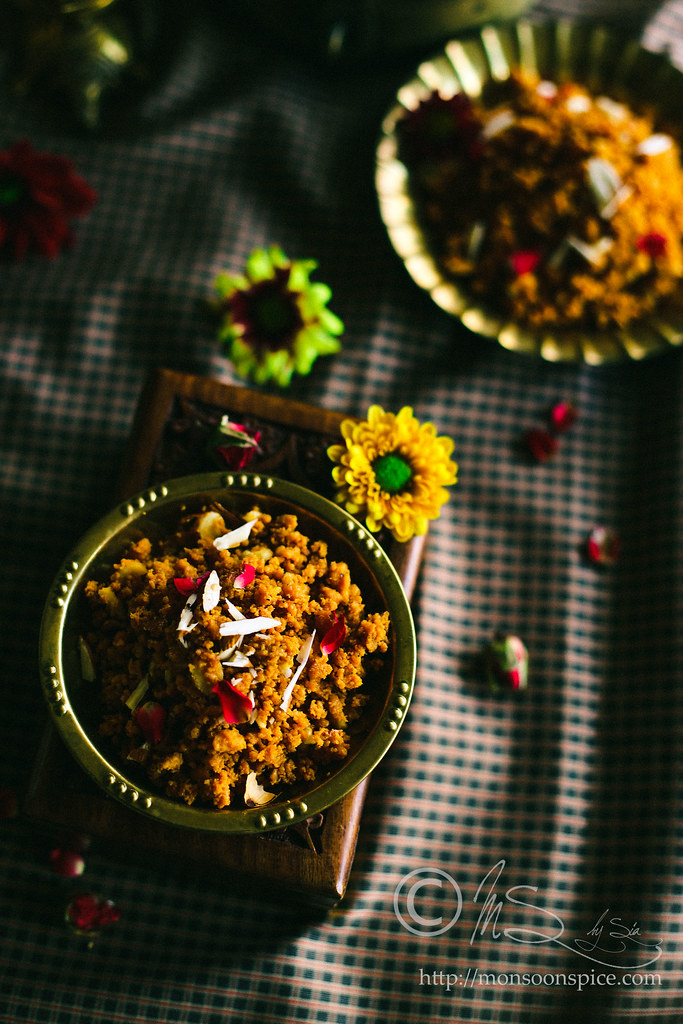
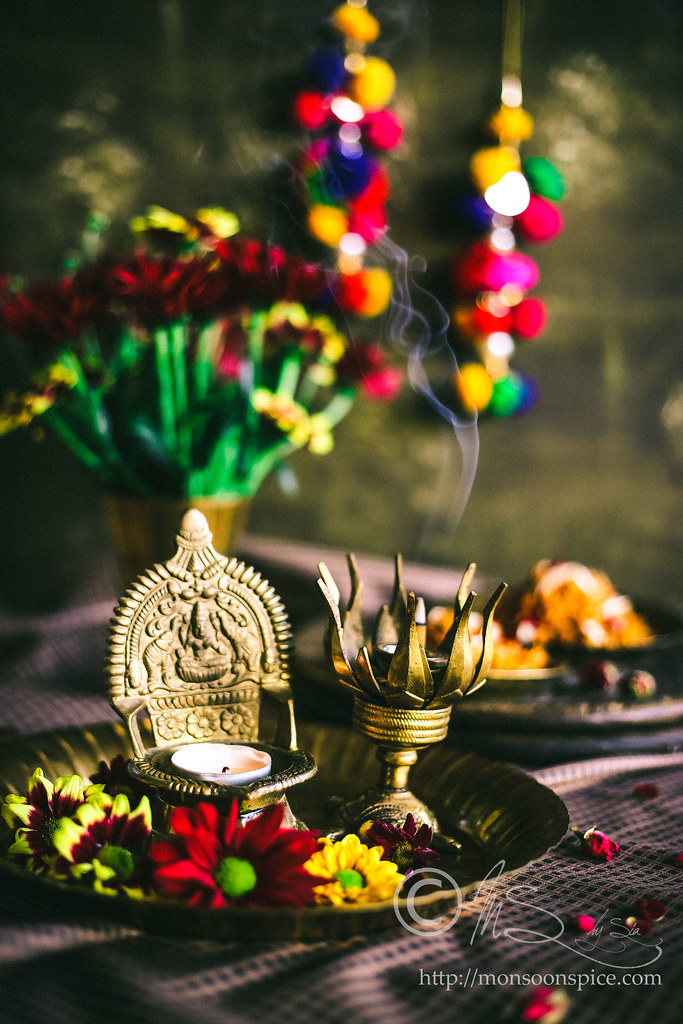
Belgaum Kunda or Belgavi Kunda (Sweet caramalised milk fudge from Belgaum, North Karanata)
Prep Time: 5 mins
Cooking Time: Around 1½ hours
Recipe Level: Easy/Beginner
Spice Level: N/A
Makes: Around 3 – 3½ cups
Shelf Life: Up to 4 days at room temperature and up to 2 weeks in refrigerator
Serving Suggestion: Best served warm or at room temperature
Ingredients:
2 litre Full Fat or Whole Milk
1 cup Yogurt
¾ cup + ¾ cup Sugar (Adjust as per taste)
7-8 Green Cardamoms
2-3 tbsp Dry Nuts, chopped or slivered (I have used almonds and cashew nuts)
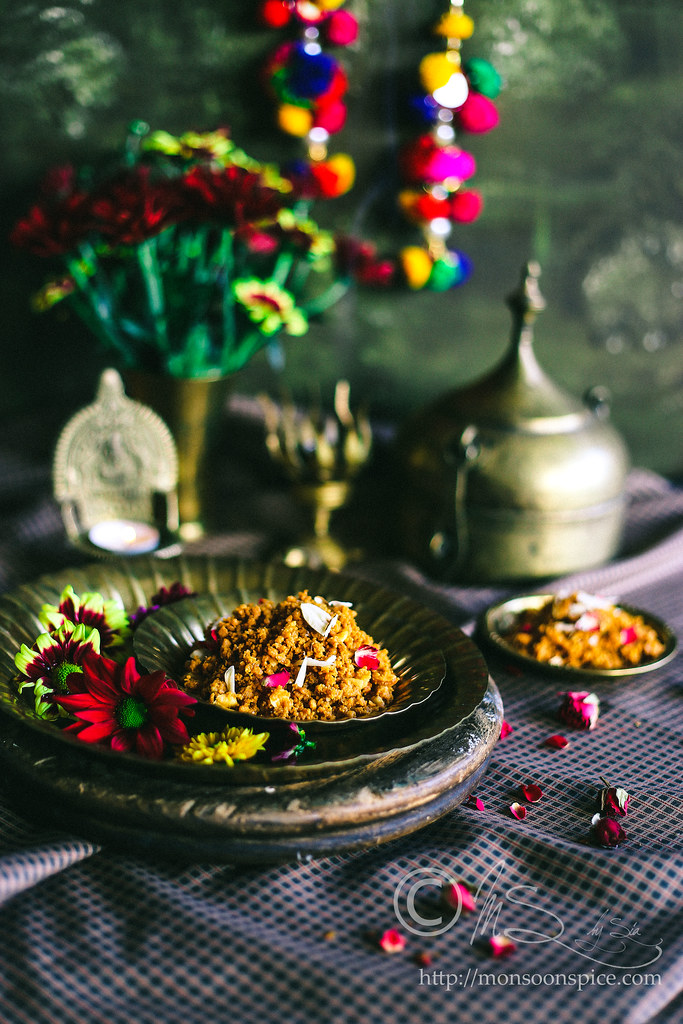
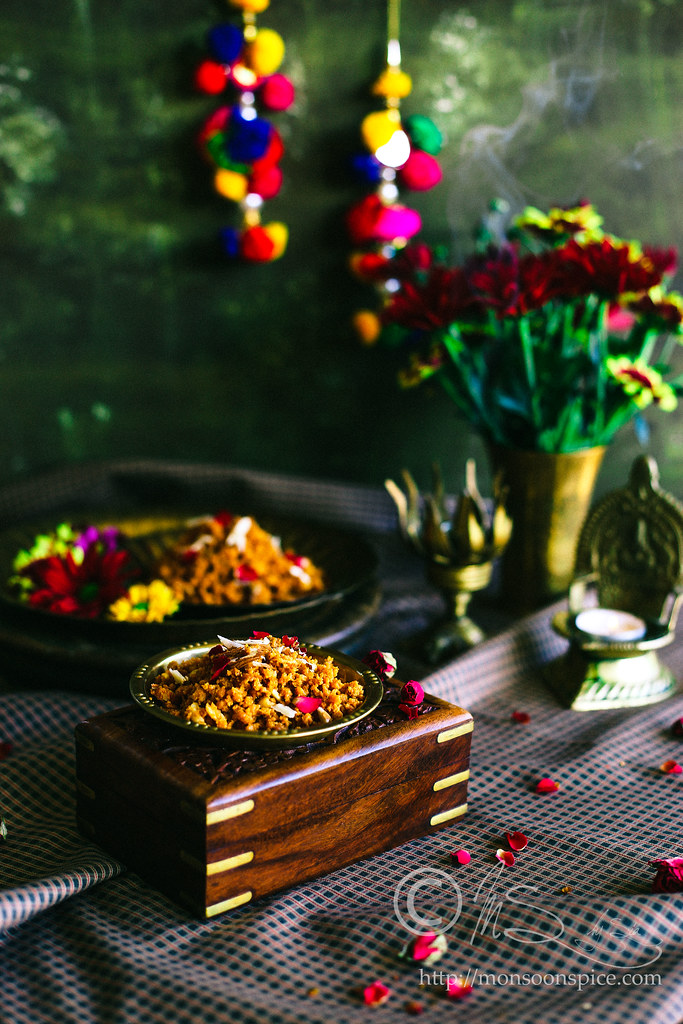 Method:
Preparation:
Method:
Preparation:
- Take milk in a heavy bottomed pan and bring it to boil on a medium flame.
- While the milk is getting heated, chop the cashew nuts and sliver the almonds.
- Crush the green cardamom pods in a pestle and mortar. Peel the pods and retain the seeds and discard the green skin. Crush the seeds to fine powder and keep it aside until needed.
Proceed to Cook:
- Let the milk simmer and reduce to 1/3 rd of original quantity. Keep stirring periodically to make sure that the milk solids don’t stick to the pan and brown and make sure that you mix the cream formed on the surface while the milk simmers. It takes around 40-60 minutes for the milk to thicken and reduce to 1/3 rd. So be patient.
- Once the milk is reduced, add yogurt and keep stirring. The milk will curdle and the whey will separate from the milk solids. Keep stirring for 10 minutes before adding ¾ cups of sugar.
- While you keep stirring the milk solids, heat the remaining ¾ cups of sugar in a pan on medium heat. You don’t need to add any water when caramelising the sugar. Let the sugar melt and caramelise to golden brown colour.
- Transfer this sugar caramel to the milk solids and keep stirring until whey or liquid is completely evaporated and the milk solids are left.
- Add ground cardamom powder and mix them well. Keep stirring for another 3-5 minutes until the Kunda resembles a solid mass.
- Finally mix in finely chopped almonds and cashew nuts and turn off the flame. You can transfer the Belgavi Kunda to a greased tray and cut it into squares or serve as it is as I have done here. I like to serve it little warm, but it tastes equally good when served at room temperature or even chilled.
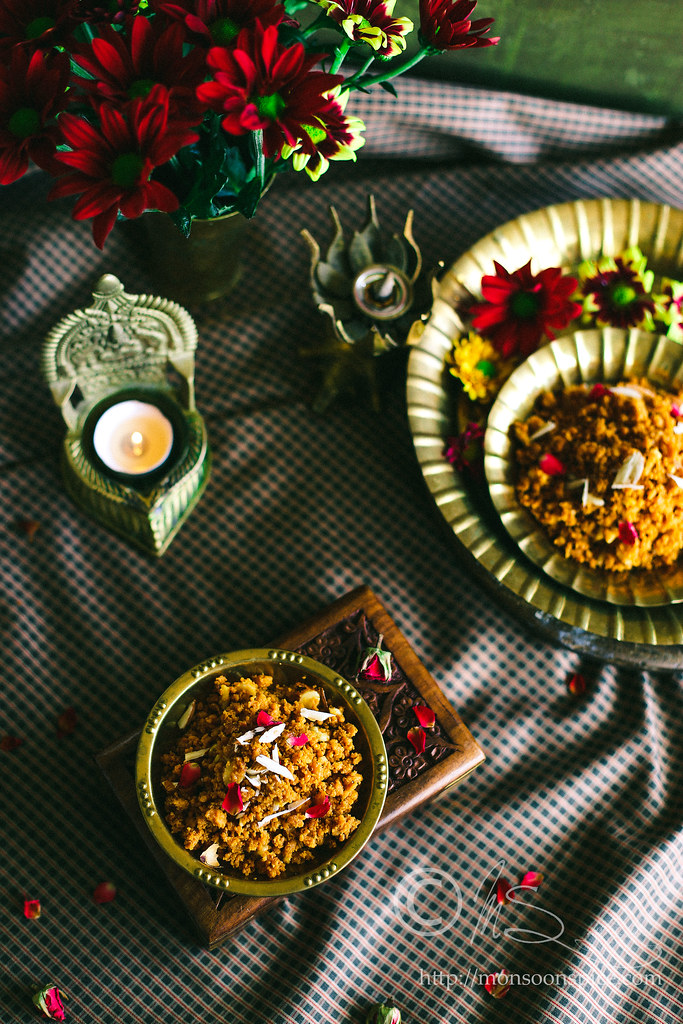
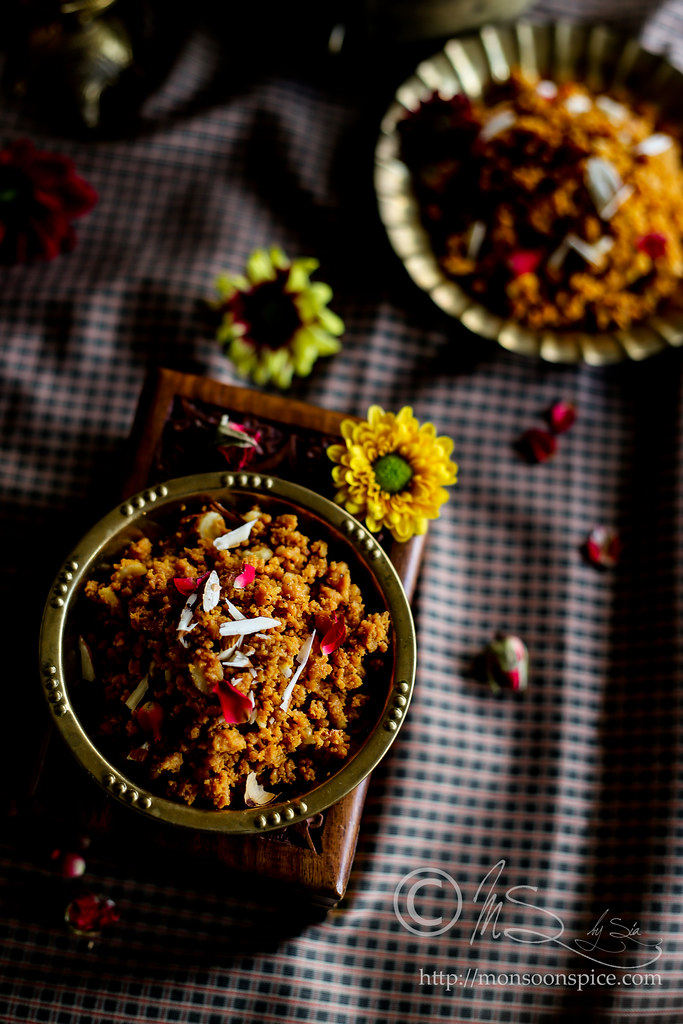
Sia’s Notes:
- When reducing the milk to 1/3rd of original quantity, please do take care not to burn the milk by stirring periodically and mixing any milk solids stuck to the bottom of the pan or in the sides. The burnt milk is not really pleasant to taste, so be patient when making the Kunda.
- Green cardamom powder is an optional ingredient and you can skip using it if you are not too fond of the flavour.
- Adjust the quantity of sugar as per taste.
- You can transfer the Belgavi Kunda to a greased tray and cut it into squares or serve as it is as I have done here. I like to serve it little warm, but it tastes equally good when served at room temperature or even chilled. For a change, you can serve it warm with a scoop of good quality vanilla ice cream too.














Yum! I love the way you presented this recipe; so beautiful!
ReplyDeleteThank you, Luci :)
DeleteI just know I'd love this recipe, even though I haven't tried it before. And thanks for the detailed post all about Holi - I didn't know anything about it before and it was fascinating to read about it.
ReplyDeleteIf you have a sweet tooth, then you will love this dish for sure Jodie. Glad to hear that you found the write-up fascinating. I have learnt a lot about different cultures and regional festivals through blogs and it always intrigues and fascinates me :)
DeleteThis is beautiful and looks like it'll taste amazing! So many tasty flavours!
ReplyDeleteThank you :) It's a simple recipe with just a handful of ingredients but yes, requires a lot of patience and time. But in the end its all worthwhile when we finally get to sit down and taste it.
DeleteWhat a great post with so much information! Wish I remembered all of it! :) This is a very interesting recipe and I have never seen something like that before. Great to see what other cultures eat!
ReplyDeleteThanks, Julie. LOL... I won't blame you if you can't remember most of the things I ramble here :)
DeleteBeautifully written post Sia. Happy Holi to you and your family!!
ReplyDeleteI tasted kunda for the first time during my visit to India and totally loved its rich milky flavor. Thank you for the recipe.
Thank you, Shilpa! I love the taste of Kunda as well with little sour taste from the yogurt, but can't eat more than one piece a day :)
DeleteThank you Sia ! for posting this. Just to confirm - the whey is never thrown away, but we mix it back with the solids and keep stirring until it evaporates. Is that right ?
ReplyDeleteThat's right. It's cooked until the whey evaporates leaving behind the milk solids. That's the reason if has a strong milk flavour with a hint of sourness from yogurt.
Delete